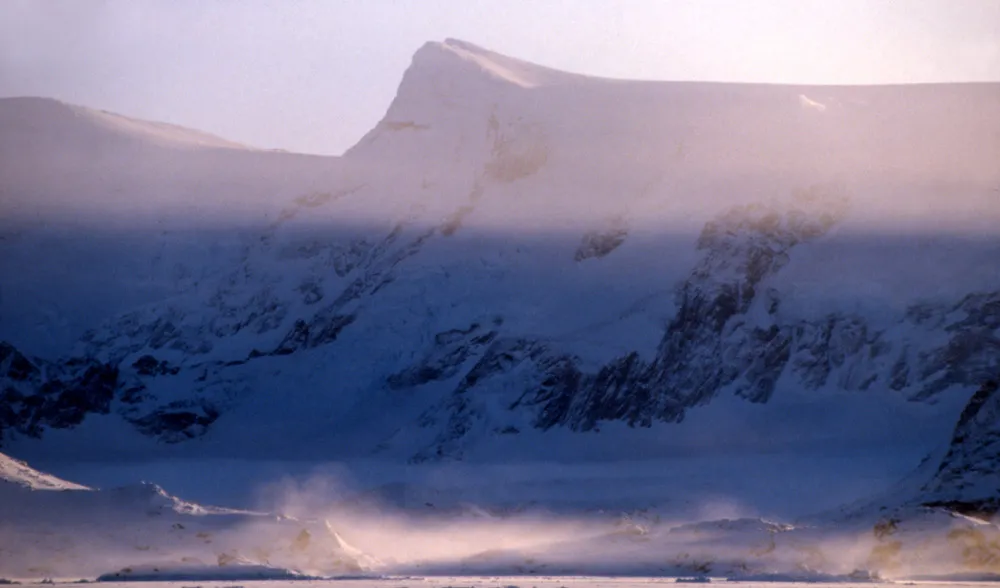Sea smoke -2°C water meets -32°C air
- Antarctic Weather Phenomena
Another take on the idea that water turns
to vapour when it is considerably warmer than its surroundings.
In this picture, water is being exposed at the "tide-cracks"
that form around offshore rocks and small islands when the
tide rises and falls with continuous sea-ice present. As
the ice is not flexible it cracks and as it does, exposes
an amount of open water to the air.
Antarctic sea water varies between about +2°C and -2°C (the
letter being the freezing point of sea water) over the course
of a year, so in the case of this picture, the exposed sea
water is more than 30°C warmer than the surrounding air.
The result - it begins to turn to a vapour being so much
warmer. The sunshine on this day serves to make it more
visible and different temperature layers in the air cause
it to rise to a band above the clearer air close to the
ice surface.
Previous
Next
Back to thumbnails
Photo credit - Paul Ward / coolantarctica.com

